“Glacier-capped mountains, old-growth temperate rain forests, and over 70 miles of wild coastline . . . the park protects several distinctively different and relatively pristine ecosystems. These places shelter a unique array of habitats and life forms resulting from thousands of years of geographic isolation. Olympic National Park is a place unmatched in the world.”
nps.gov
Overview
Olympic National Park is certainly one of the most diverse US National Parks and one of the most accessible–it’s in Northwestern Washington, just a couple hours from Seattle and short ferry ride from Victoria Island and Vancouver BC. The entire Pacific Northwest (PNW) tour, from the giant redwoods of the California coast, through Oregon, Washington, and to Victoria, offers jaw-dropping landscapes, but if you’re time-pressed, Olympic NP is the best bang-for-your-buck.
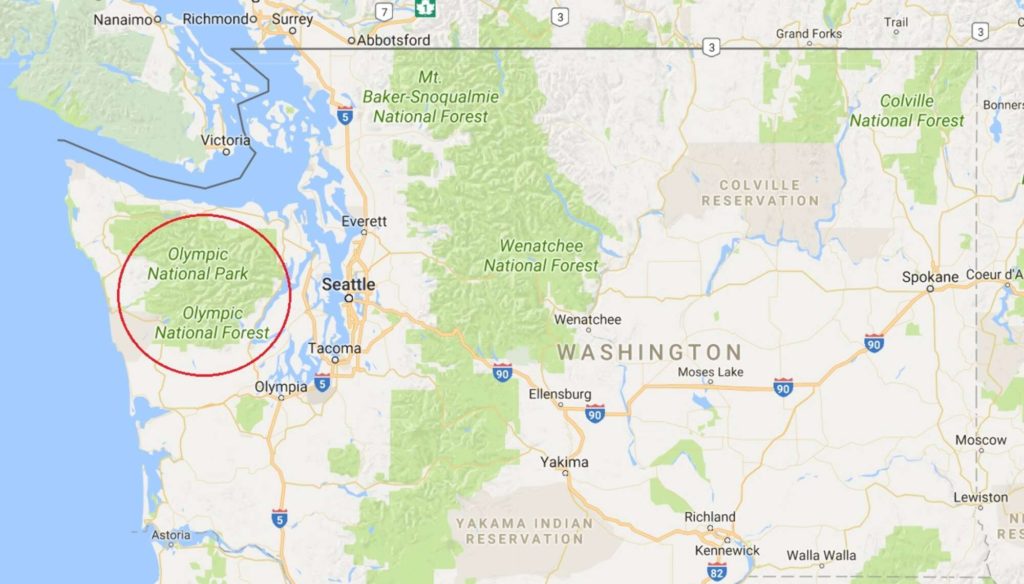
The park can be roughly divided into alpine mountain, rainforest, and coast. Mount Olympus, at 7,980ft, is the highest point, and is just 33 miles from the coast. Hurricane Ridge, near Port Angeles, on the North side of the park, is your best bet for alpine adventure. We were visiting the park to escape the PNW wildfires of summer of 2017, which created the worst smoke in the Seattle area since the Mt St. Helens eruption. We escaped the heat and ash to the West side, bypassing Hurricane Ridge altogether.
The Rainforest
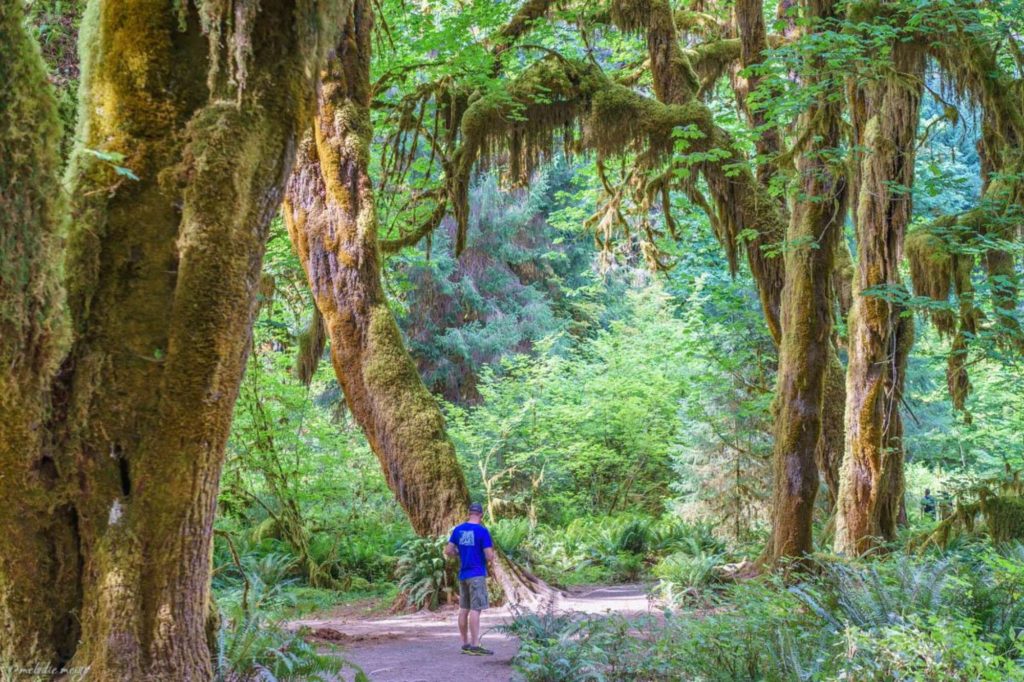
140 to 167 inches (12 to 14 feet) of rain each year creates green moss that covers everything, just as if someone went crazy with aerosol silly string spray. If you expected to look down to find green, you’ll be awed to look up at hundreds of feet at green.
Old-growth sitka spruce and western hemlock are the anchors for the moss. These old-growth forests are >200 years old, and with the amazing weather conditions of the PNW, are 250+ft tall and 30-60ft in circumference.
By acreage, there’s very few old growth forests left in the US–most of the PNW forests were logged in the early 1900s. Though many areas were replanted, few forests have the aged grandeur of our national parks-protected old growth (Redwoods National Park is the other).
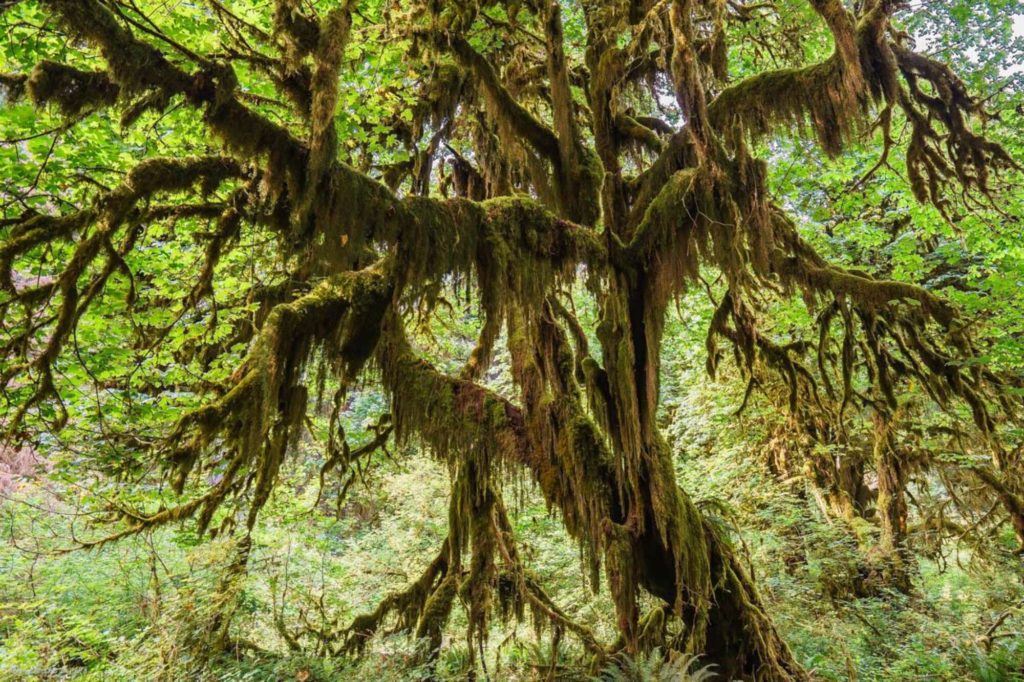
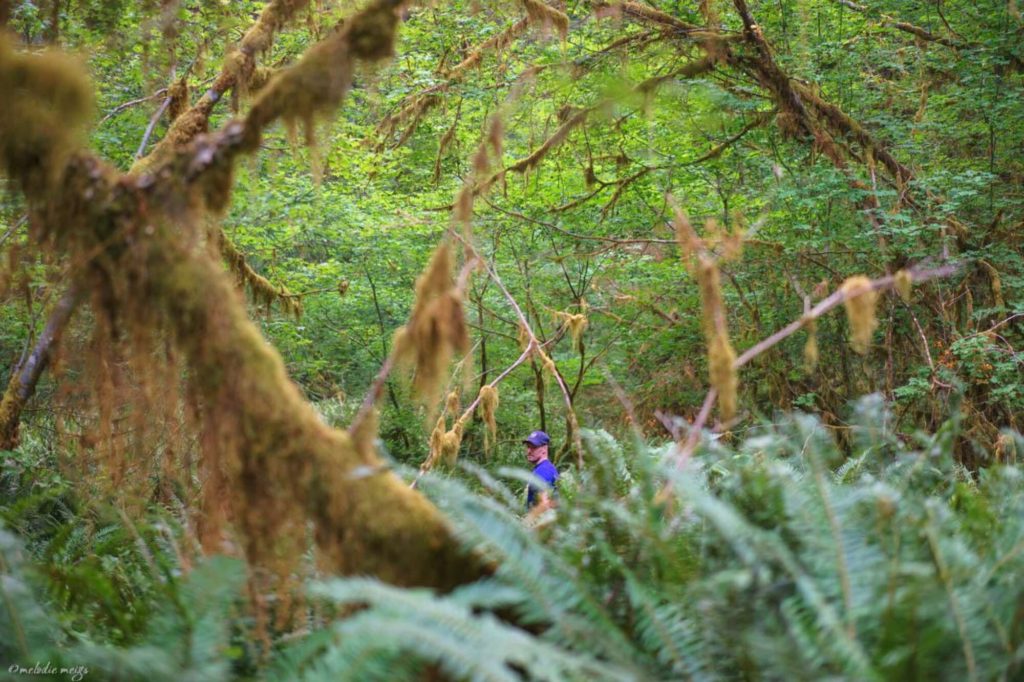
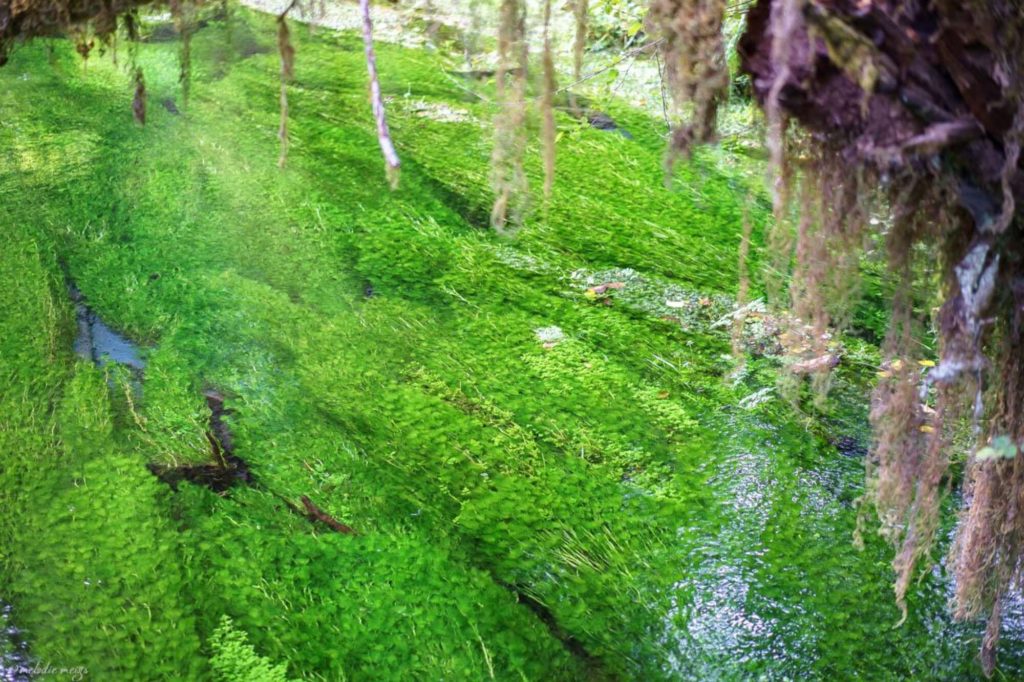
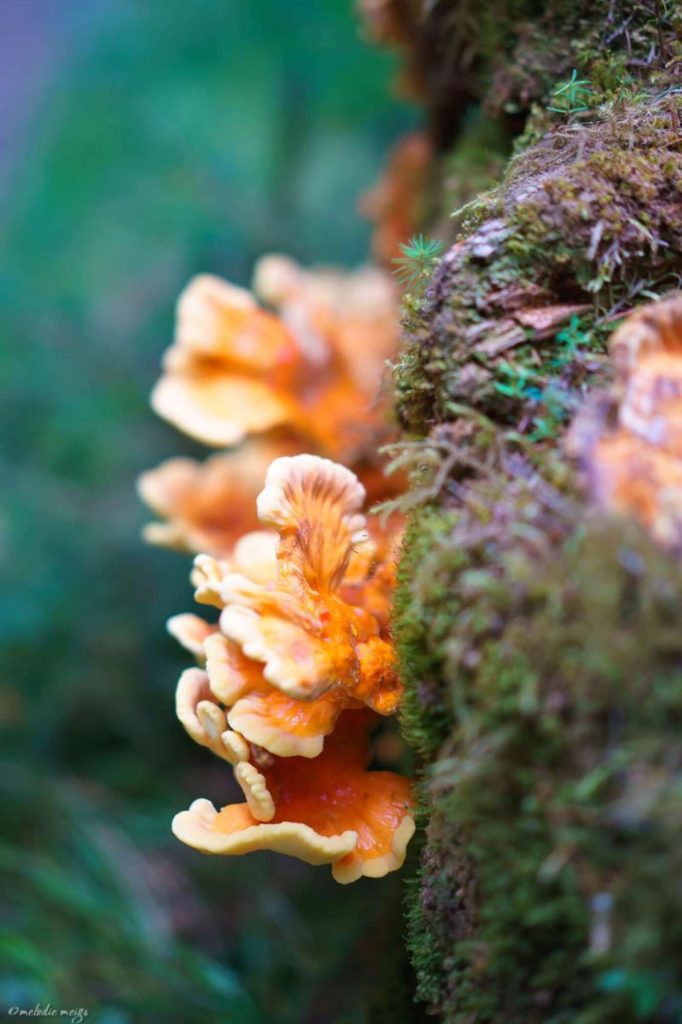
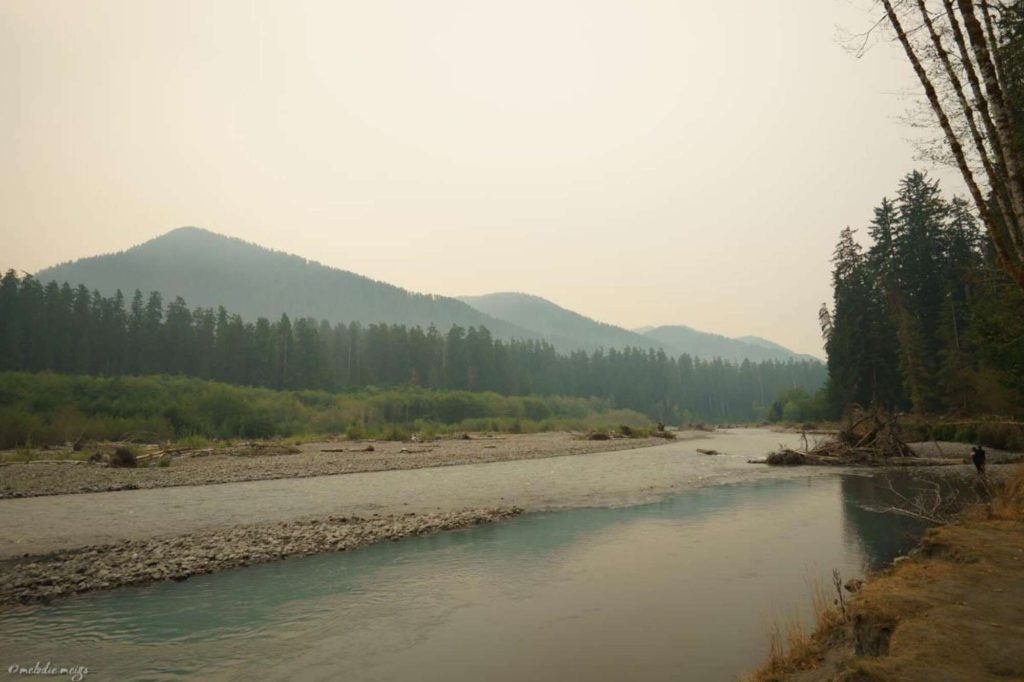
The Coast
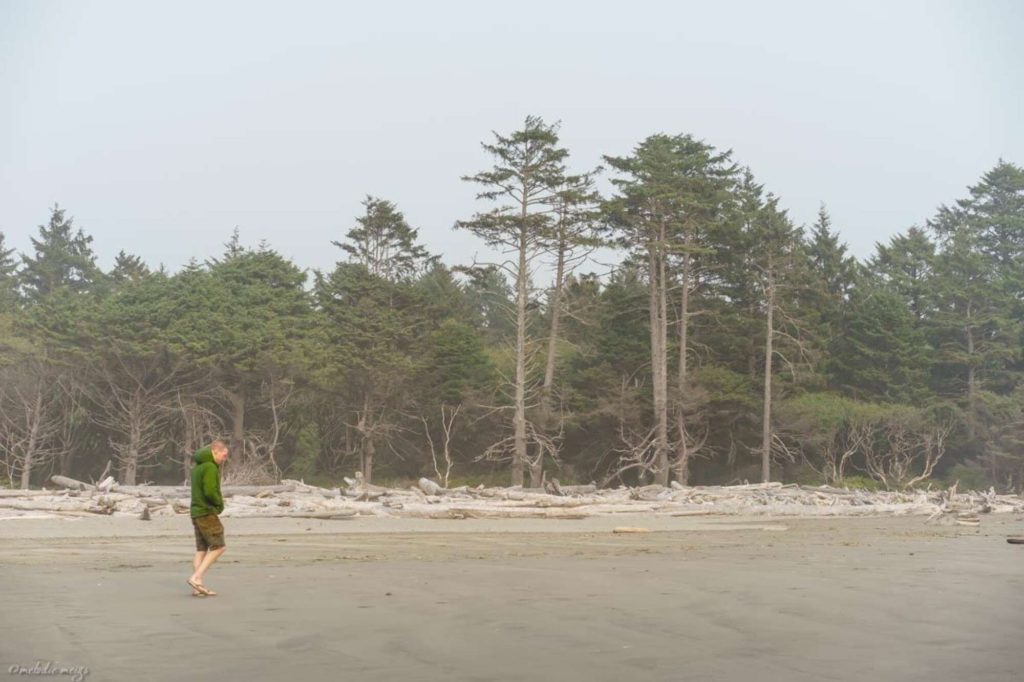
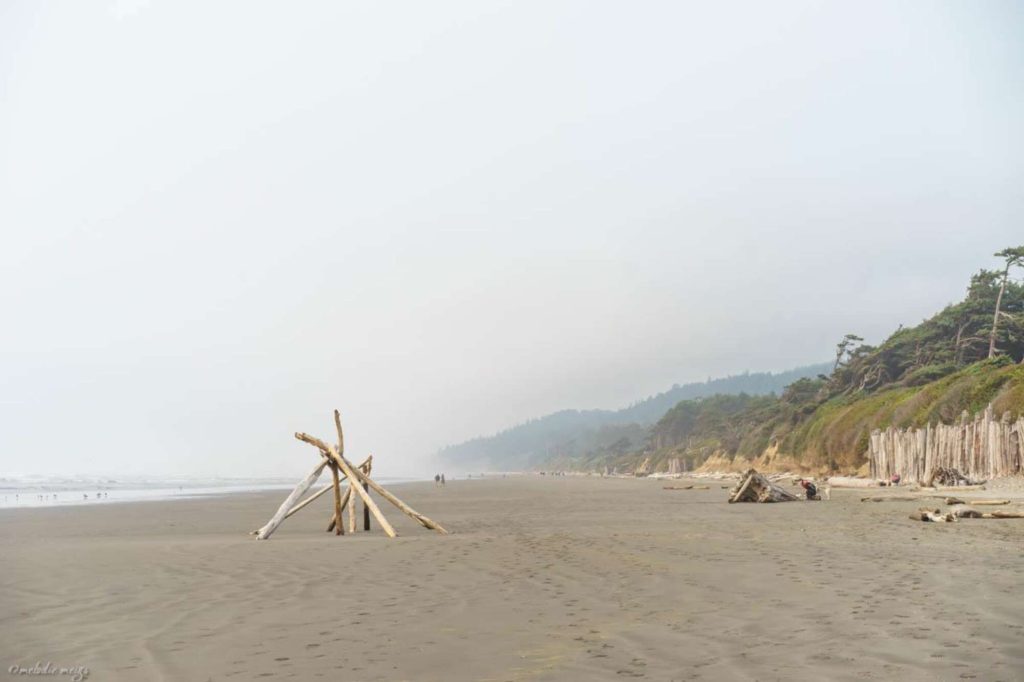
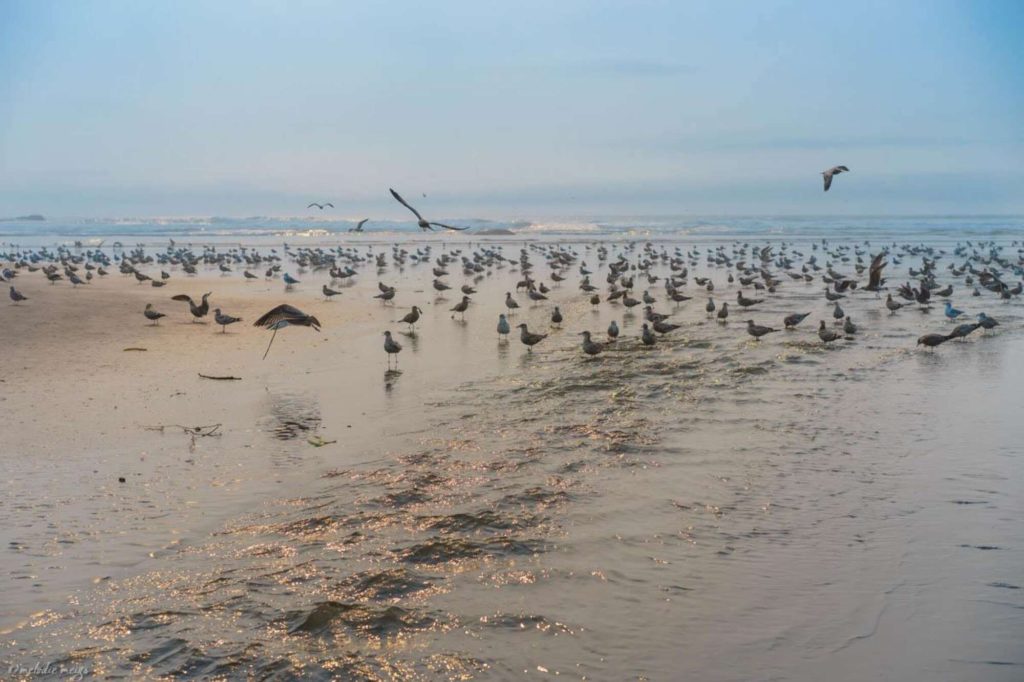
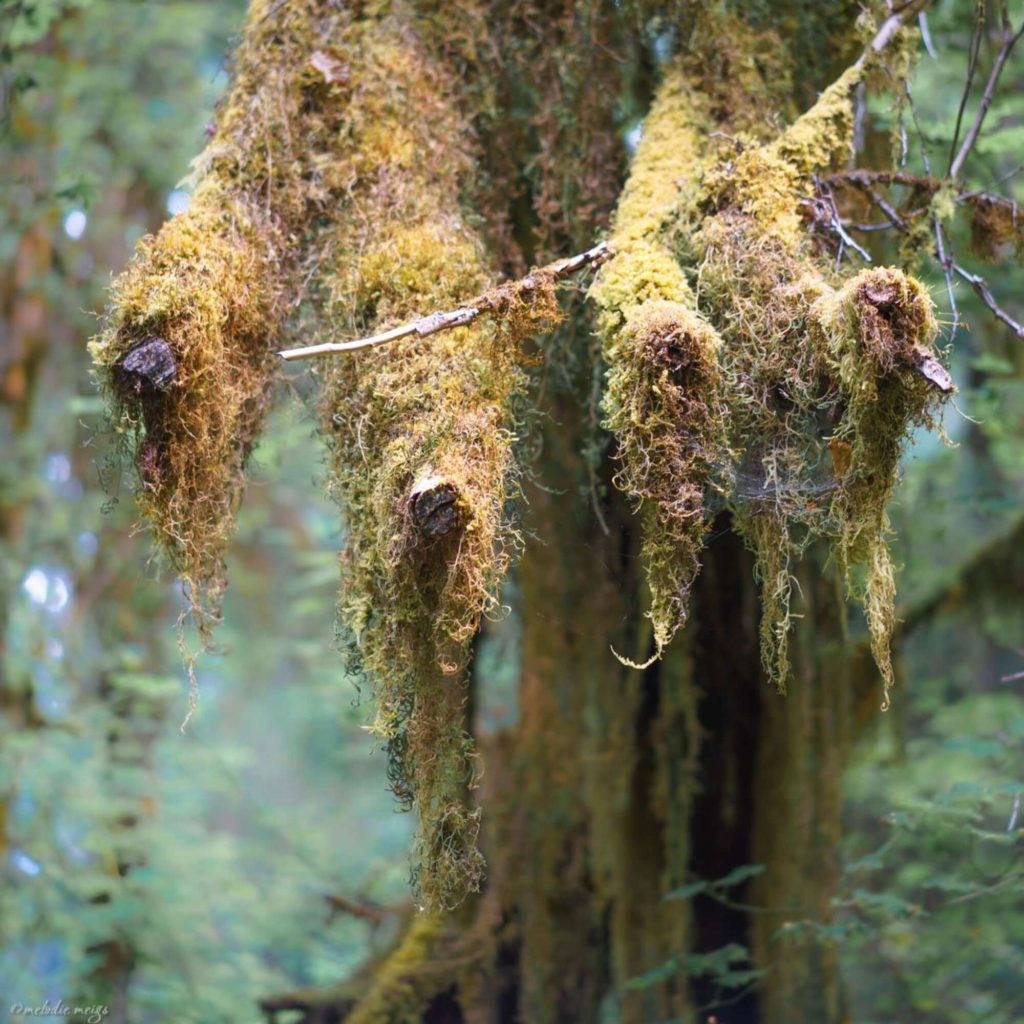
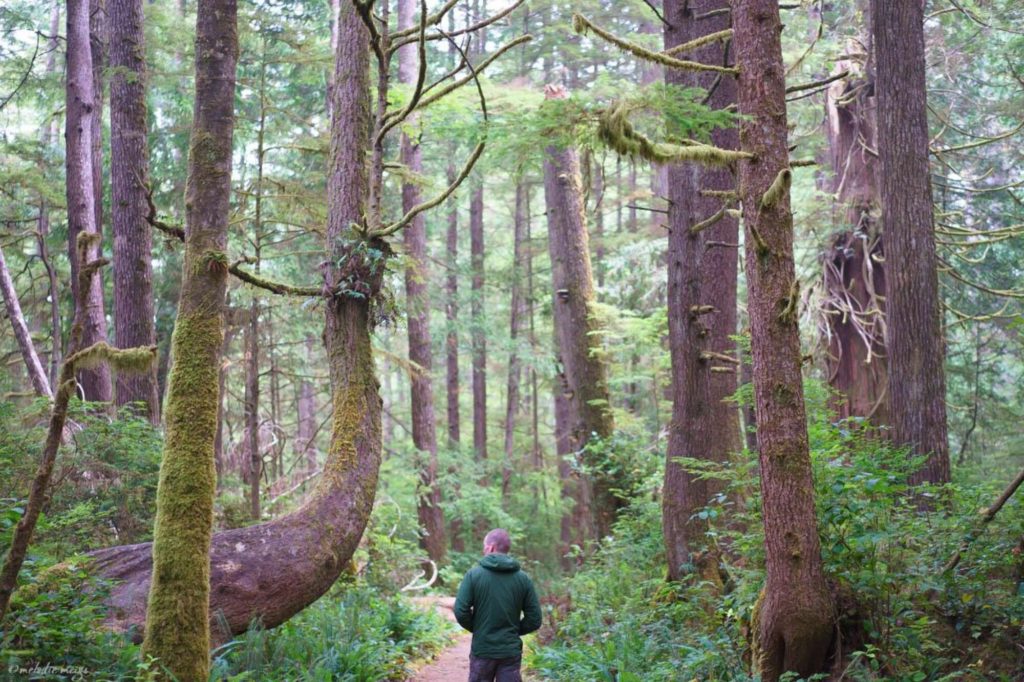
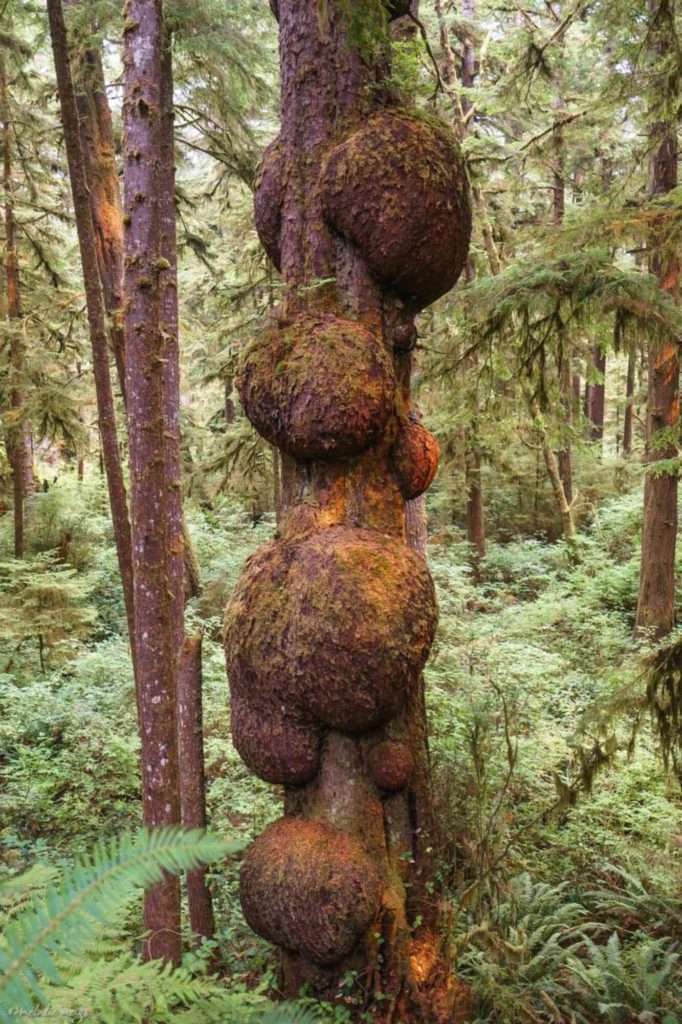
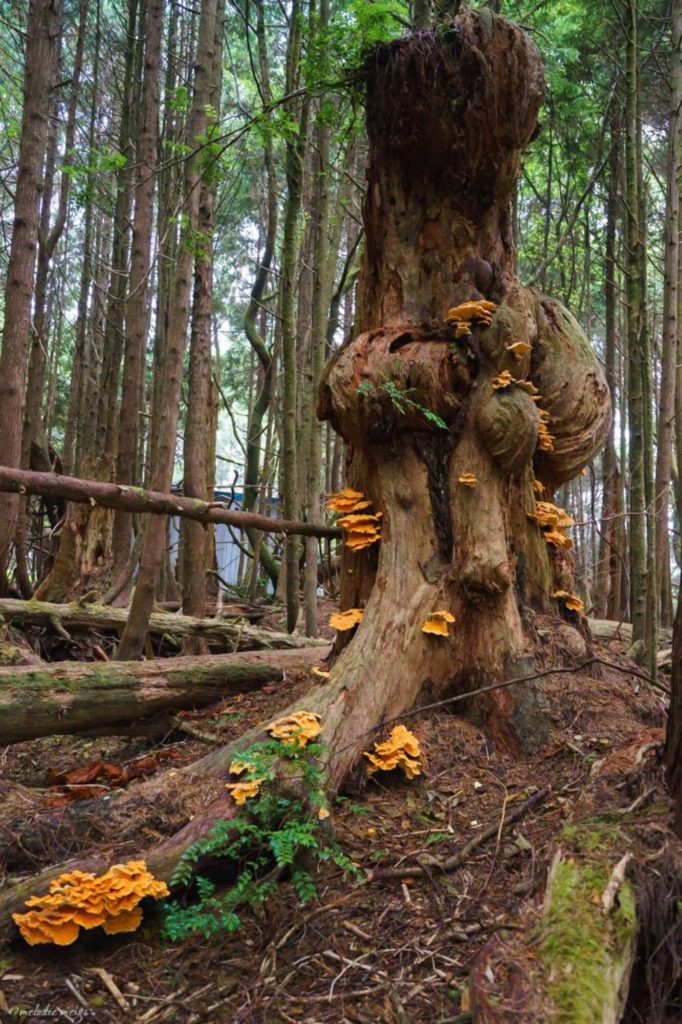
Cool facts about the park
- 922,651 acres
- 73 miles of wilderness coast
- 3,000mi of rivers and streams
- 60 named glaciers
- 1,200 native plant taxa
- 20 reptile and amphibian species, 37 fish species, 300 bird species, 56 mammal species (inc. 24 marine mammal species)
- 22 threatened or endangered species
- 16 developed campgrounds
- 64 trailheads
- 611 miles of trail
- 168 miles of road
- 8 Native American tribes in the region
- Source: nps.gov
Wildfires
The summer of 2017 was one of the worst wildfire seasons on record with >8 million acres burned, or the size of Maryland. We got caught camping in this summer of heat, humidity, and smoke. It seemed like fire after fire was attributed to humans.
The NPS has a handy chart showing historical wildfires in Olympic NP, which ones are lightning-started vs human-started, and what the yearly rainfall is. You can see that in the wettest parts, on the coast and the west side where the Hoh and Quinalt rainforests are, and in the northern part near Port Angeles, have been dominated by human-started fires. The high alpine regions are dominated by lightning fires. Surprisingly, even on the drier East side, none of the fires have been as large as the ones in recent years in the PNW.
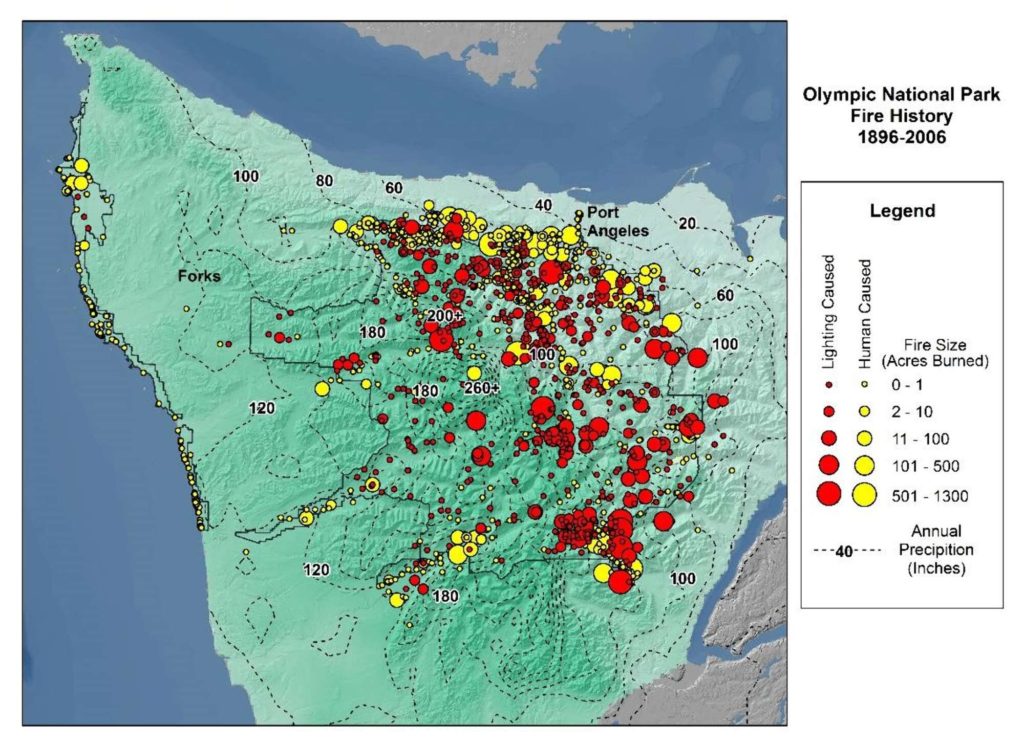
More in the Pacific Northwest
See my other guides to gorgeous, family-friendly locations in the PNW:
→ Explore more articles in Travel Destinations